Fabric softener solution to clay?
eureka
13 years ago
Featured Answer
Sort by:Oldest
Comments (39)
pippimac
13 years agolast modified: 9 years agobatyabeth
13 years agolast modified: 9 years agoRelated Discussions
Unscented liquid fabric softener?
Comments (13)beanwabr - I use the least expensive vinegar I can purchase and get it from Sam's Club (it's sold two 1-gallon jugs in a box). It has 5% acidity, as most white distilled vinegars do. I only use it in the kitchen towels and the bath towels, incase they have any soap residue on them from use. Vinegar acidifies the water to aid in removing soap/detergent residue. You can add scent to vinegar, if you like. Look on-line for something like "Lavender Vinegar Laundry Rinse" if you need a specific recipe - you'll find LOTS of variations. I have a few recipes in a file and once made Lavender Vinegar with real lavender buds soaked in vinegar for 6-weeks. I didn't think it was worth the expense and effort, but it did have a mild lavender scent. I've also put lavender sachets in the dryer. "Sachets" may be stretching it a bit...LOL! I used 1/2-cup of lavender buds and put them in one of hubby's old, thin, dress socks and tied the sock shut (rather than making a nice muslin bag for it). It DOES leave a mild lavender scent on clothing for several loads. Then you have to add some lavender oil to the buds. A spritz with a scented linen spray may work for you, as well. I dry my clothes on a line indoors or outdoors and have never noticed any lingering vinegar scent. Nor when I used the dryer. Are you using white distilled vinegar or cider vinegar? That may make a difference. I think there's a difference between "soft" clothing and "limp" clothing from all the chemicals in softeners that coat and permeate the fabrics. Perhaps you haven't given yourself, and your clothing, enough time to adapt to using vinegar in the rinse. I use Charlie's Soap, and that may also make a "softness" difference. Laundry washed in Charlie's Soap is SOFT coming wet out of the washer. That was one thing I noticed when I finally got the old detergent residue washed out of our clothes when I first started using Charlie's Soap. My husband's brother was staying with us for a few days and asked me where I got my towels because they were the softest he'd ever used. I got them at K-Mart and had never used softener on them, only vinegar in the rinse... You might want to give dryer balls a try. I'd suggest the new ones - same blue nubby balls, but with the large pink dots on them (I linked to them in another post above). They are the "improved" second generation. The ones with the large pink dots help reduce static, while the plain blue ones didn't. I used the dryer balls in the dryer when we first moved here and didn't have a clothes line for several months while the landscape work was being done, which included a courtyard for my clothes line. Dryer balls also "fluff" the clothing and I found they reduced drying time by 25%, and some loads as much as 50%. Hope there's something there that will help... -Grainlady...See MoreFabric softener is evil
Comments (49)I do not use FS & never have, not dryer sheets nor the kind for the washer. In my opinion they stink of artificial scent & when I am around machines whose owners use them, I go into sneezing fits. I also use unscented liquid detergent. My sister has severe asthma; my husband and daughter have mild asthma. I would not think of using scented products in my house because of exposing the asthmatics to triggers. Here is the thing, you FS users---if something is bad for asthmatics to breathe, it is also bad for you to breathe. Their immune systems are just hypersensitive to bad things, and they get an attack. The same stuff is bad for you; you just do not get the early-warning "siren" from your body that they do from theirs. As to fluffy towels--may I suggest buying higher quality towels? Hotels that have thick soft towels are buying really good ones. I have cheap thin towels from my college student days that are great for rubbing the cat after her bath --- and I have thick, soft, nice towels that I dry myself with. Are you shaking them & fluffing them when you pull them from the washer, not just stuffing them in the dryer?...See Morefabric softener
Comments (24)It's important to wash the lint screen periodically no matter what softener product you use. I use white vinegar in the rinse and NO fabric softener of any kind - liquid OR sheets. I hang my laundry out on an inside or outside clothes line, thus avoiding the cost of the dryer and the need for a softener. Since using Charlie's Soap, there are NO stiff clothing items - even those hung on the line. If I do use the dryer, I have added a couple dryer balls which help to reduce wrinkles, reduce drying time by 25-50% and reduce static (although it does not completely eliminate static). Avoiding man-made fabric is a good way to eliminate static in the dryer. Fabric softeners in the forms of sheets and liquids are a dangerous comfort I choose to eliminate from my laundry, and you may want to reconsider using it - especially if you have children's clothing or a smoker in the house, where accidently lighting clothing or bedding on fire might be a high possibility, or you have someone in the family who has respiratory (breathing) difficulties. "Fabric softeners used on fluffy materials like your childÂs fleece pajamas or your terrycloth robe and towels can increase flammability." "Fabric softener perfumes often contain ethyl acetate, benzyl alcohol, camphor, ethanol (which is on the EPA Hazardous Waste list), limonene, linalool, and a-Terpineol. These chemicals cause respiratory irritation and even failure, headache, nausea, dizziness, anemia, liver and kidney damage, CNS disorders, and respiratory edema  and many of them have the EPA warning to wash hands after handling!" "Most of the dangerous chemicals in fabric softeners are most dangerous when inhaled  whatÂs the first thing you do when you take your fluffy, sweet-scented clothes out of the dryer?" If you've ever eliminated these toxins from your laundry, the next time someone passes you with these heavy-scented laundry products on their clothing, you'll gasp from the exposure to the toxins. I consider use of fabric softeners unnecessary for soft clothes, and it may actually be putting your family at risk. -Grainlady...See MoreNew Fabric Softener Find :)
Comments (34)Mich, I also wish STPP was more readily avilable, but I do buy it on Amazon with no postage. Funny you should mention how it will strip Carbonates, since carbs is one of my biggest concerns on why fabric can be scratchy or stiff, I use mostly powder detergent, if I add a booster like oxiclean which is mostly sodium carbonate, I run the risk of carbonate over dose which without STPP can be a real problem to rinse out. I've talked about this a number of times. My solution I order a more pure sodium percarbonate so I dont need the oxi clean. I do use STPP IN most loads, There are others here that also use it, but I think not too many.Of course I'd be interested in any research you have done, thank you and nice to see you (so to speak) ....See MoreKimmsr
13 years agolast modified: 9 years agoborderbarb
13 years agolast modified: 9 years agojean001a
13 years agolast modified: 9 years agoga_karen
13 years agolast modified: 9 years agonancyjeanmc
13 years agolast modified: 9 years agopiedmontnc
13 years agolast modified: 9 years agoKimmsr
13 years agolast modified: 9 years agoeureka
13 years agolast modified: 9 years agoeureka
13 years agolast modified: 9 years agoLloyd
13 years agolast modified: 9 years agoeureka
13 years agolast modified: 9 years agopippimac
13 years agolast modified: 9 years agoLloyd
13 years agolast modified: 9 years agoeureka
13 years agolast modified: 9 years agoKimmsr
13 years agolast modified: 9 years agoeureka
13 years agolast modified: 9 years agosnidelywhiplash z5b
13 years agolast modified: 9 years agojean001a
13 years agolast modified: 9 years agodorisl
13 years agolast modified: 9 years agoeureka
13 years agolast modified: 9 years agoeureka
13 years agolast modified: 9 years agodorisl
13 years agolast modified: 9 years agoeureka
13 years agolast modified: 9 years agobatyabeth
13 years agolast modified: 9 years agoterrene
13 years agolast modified: 9 years agoUser
13 years agolast modified: 9 years agoeureka
13 years agolast modified: 9 years agobpgreen
13 years agolast modified: 9 years agoeureka
13 years agolast modified: 9 years agobpgreen
13 years agolast modified: 9 years agoarcherb
13 years agolast modified: 9 years agosuncitylinda
13 years agolast modified: 9 years agobrhgm
13 years agolast modified: 9 years agorott
13 years agolast modified: 9 years agojoepyeweed
13 years agolast modified: 9 years agoeureka
13 years agolast modified: 9 years ago
Related Stories
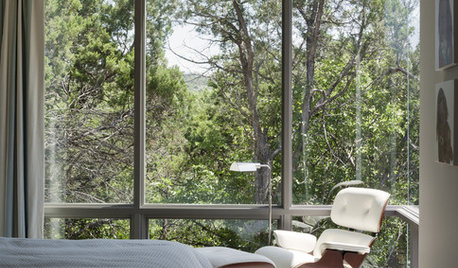
DECORATING GUIDESThe Art of the Window: Drapery Solutions for Difficult Types and Shapes
Stymied by how to hang draperies on a nonstandard window? Check out these tips for dressing 10 tricky window styles
Full Story
Extend Window Design Solutions With Short Curtain Rods
Full-length curtain rods too bulky for your room? Opt for the abridged version instead
Full Story
GARDENING GUIDESGardening Solutions for Dry, Sandy Soils
Has your desert or beachy site withered your gardening creativity? Try these ideas for a beautiful, easy-care landscape
Full Story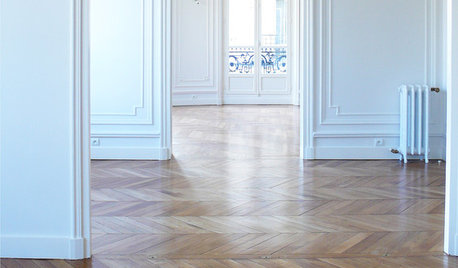
DECORATING GUIDESDesign Solutions for 11 Tricky Spaces
Creative furniture placement, smart storage and sleight of hand turn your home's problem areas into stylish places to enjoy
Full Story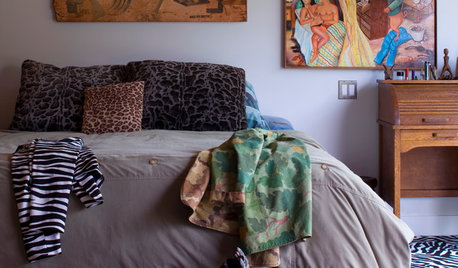
DECORATING GUIDESFix Those 'Whoopsies': 9 Fast Solutions for Decorating Mistakes
Don't suffer in silence over a paint, furniture or rug snafu — these affordable workarounds can help
Full Story
FURNITUREBrilliant Solution: The Curved Sofa
See how a curved sofa can enhance conversation, solve decorating dilemmas, and create a more welcoming room
Full Story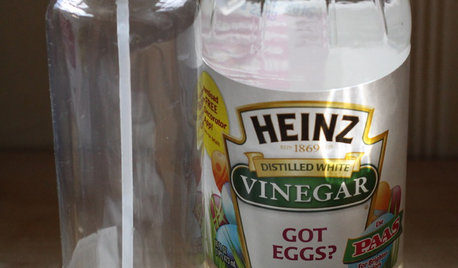
HOUSEKEEPINGMagic Solution for Hard Water Stains
Vanquish evil hard water stains with this inexpensive, fast-acting and all-natural ingredient. And it's probably right in your cupboard
Full Story0
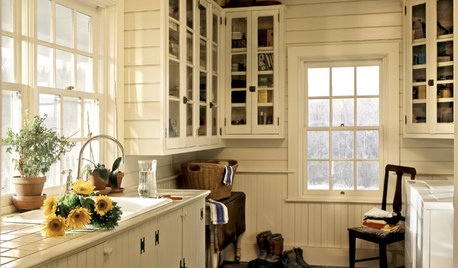
LAUNDRY ROOMSDouble-Duty Savvy: 10 Supersmart Laundry Room Combos
Throw some extra function in along with the fabric softener to spin your laundry room into mutitasking mode
Full Story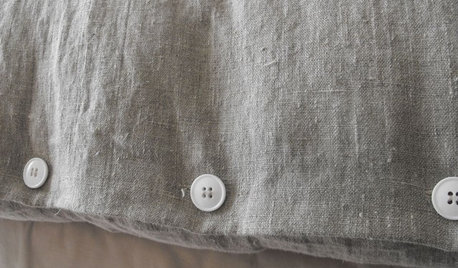
UPHOLSTERYFabric Focus: There's Nothing Quite Like Linen
Classic, understated, durable and mildew-resistant, linen is a casual fabric fit for any home
Full Story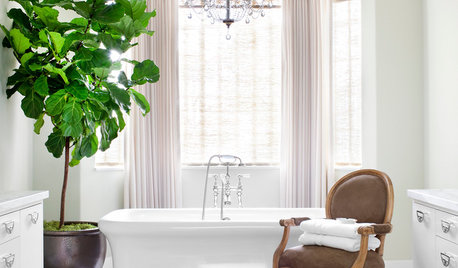
BATHROOM DESIGNThe Elegant Look of Draperies in the Bathroom
Drapes add privacy and soften a room full of hard surfaces. See how they can be styled for baths
Full Story




Kimmsr